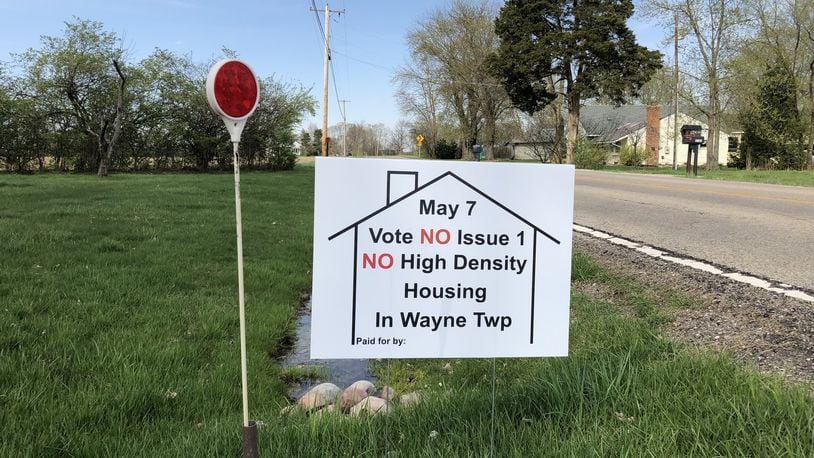“I’m worried about the long-term implications this type of zoning will have on our community,” resident Tom Duerr said.
Developer John Federle wants to subdivide the land fronting at 5615 Lytle Road into a planned community.
Warren County sewers are available to serve the project.
Despite opposition, the Wayne Twp. trustees voted 2-1 for Federle’s planned community, also setting aside 8.5 acres as “green space,” in an area envisioned as a transition from residential Waynesville to more rural Wayne Twp.
Residents led by Duerr petitioned the trustees to call for the referendum, which stayed on the ballot despite challenges by Federle to the Warren County Board of Elections and Ohio Supreme Court.
“There’s a lot at stake here,” Federle said. “It’s whether I can develop my property or not.”
Wayne Twp. includes the villages of Waynesville and Corwin.
Population estimates put the township population at 8,996, including 5,468 in the unincorporated area - more than Waynesville, 3,081, or Corwin, 447.
But voters on the referendum can only come from the unincorporated areas of the township, just south of the Greene County border, off U.S. 42 and Ohio 73, east of Springboro-Clearcreek Twp.
There are 3,935 registered voters in this unincorporated township, 39 who registered since January, according to the Warren County Board of Elections.
Duerr said his group had distributed 25 signs arguing against the plan. He also is distributing a longer statement in favor of the referendum.
Federle said the campaign signs are wrong to call his development high density.
“Density is one of those ambiguous terms,” Federle said, pointing to other nearby residential subdivisions, some done by him, that have more homes per acre.
Federle pointed to data in a recent community magazine, indicating that, between 2006 and 2016, 255 new homes were built on 587 acres of former farm land in the township.
Under the zoning permitted for the project, Federle said as many as 332 acres could have remained in agricultural use.
“This development will save farm land,” he said.
Voting has already begun at the board of elections office in Lebanon.
Duerr maintains Federle’s planned community would set a precedent clearing the way for residential developments contrary to the township’s rural character.
“If the majority is in favor of this, so be it,” he said.
About the Author
